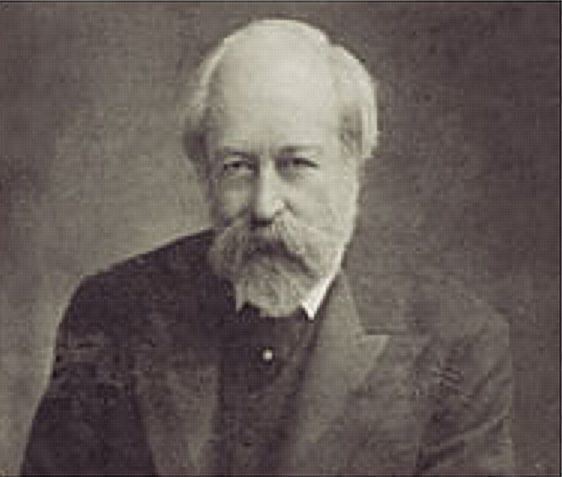Nationality English Role Architect Name George Bodley | Practice Bodley and Garner Occupation Architect | |
 | ||
Structures Washington National Cathedral, All Saints' Church - Cambridge, Liverpool Cathedral, St Mary's Church - Eccleston, Hewell Grange Similar People Philip H Frohman, Henry Vaughan, Giles Gilbert Scott, William Butterfield, Thomas Henry Wyatt | ||
All Saints, Jesus Lane, Cambridge - Victorian gothic beauty
George Frederick Bodley (14 March 1827 – 21 October 1907) was an English Gothic Revival architect. He was a pupil of Sir George Gilbert Scott, and worked in partnership with Thomas Garner for much of his career.
Contents
- All Saints Jesus Lane Cambridge Victorian gothic beauty
- Personal life
- Career
- Partnership with Thomas Garner
- Liverpool Cathedral competition
- Late works
- Royal Academy
- Other activities
- Death
- Church repairs alterations and furnishings
- Secular buildings
- References

Personal life
Bodley was the youngest son of William Hulme Bodley, M.D. of Edinburgh, physician at Hull Royal Infirmary, Hull, who in 1838 retired to his wife's home town, Brighton, Sussex, England. George's eldest brother, the Rev. W.H. Bodley, became a well-known Roman Catholic preacher and a professor at St Mary's College, New Oscott, Birmingham.
He married Minna F.H. Reavely, daughter of Thomas George Wood Reavely, at Kinnersley Castle in 1872. They had a son, George H. Bodley, born in 1874.
Career
Bodley was articled to the architect Sir George Gilbert Scott, a relative by marriage, under whose influence he became imbued with the spirit of the Gothic revival, and he became known as the chief exponent of 14th century English Gothic, and the leading ecclesiastical architect in England. He is regarded as the leader of the resurgence of interest in English and Northern European late-medieval design. Noted for his pioneering design work in the Queen Anne revival,
Bodley became acquainted with William Morris in the late 1850s, and in the 1860s his commissions for stained glass and ecclesiastical decoration helped ensure the success of Morris's firm, Morris, Marshall, Faulkner & Co., founded in 1861. Bodley is said to have designed two of Morris's early wallpapers. By the late 1860s Bodley had become disenchanted with Morris, and for stained glass turned to the firm of Burlison and Grylls, founded in 1868, for the glass in his later churches, notably St Augustine's Church, Pendlebury, near Manchester (designed 1870) and the Church of the Holy Angels, Hoar Cross in Staffordshire (designed 1871–72). Bodley worked with his lifelong friend, the stained glass designer Charles Eamer Kempe. They collaborated on projects including: St John the Baptist, Tuebrook in Liverpool; Queens' College Chapel, Cambridge; All Saints, Danehill, East Sussex and The Church of St. Mary the Virgin, Clumber Park in Nottinghamshire. His alterations to St Stephen's Church, Gloucester Road, London, the architect and president of RIBA, Harry Stuart Goodhart-Rendel said tamed the work of its founding 'rogue' Victorian architect, Joseph Peacock.
Partnership with Thomas Garner
From 1869 he worked in a twenty-eight year partnership with Thomas Garner, designing collegiate buildings in Oxford and Cambridge, country houses and churches throughout the British Isles. One cathedral was completed to his design: St David's Cathedral, Hobart in Tasmania, Australia (first design, 1865; revised 1891; building completed 1936). In 1906 Bodley designed with his pupil Henry Vaughan the Washington National Cathedral in Washington, D.C.. He also provided a design for Grace Cathedral, San Francisco, but it was not used.
As well as Vaughan, Bodley and Garner's pupils included the garden designer Inigo Thomas who specialised in formal gardens with geometrical plans in 17th and 18th century styles, which suited the houses that Bodley and Garner renovated for wealthy clients.
In 1874 Bodley founded Watts and Co. with Garner and George Gilbert Scott, Jr.
His secular work included the London School Board offices, and in collaboration with Garner, the new buildings at Magdalen College, Oxford, and Hewell Grange, Worcestershire (for Lord Windsor).
Liverpool Cathedral competition
In 1902 Bodley was an assessor for the competition to design Liverpool Cathedral which selected a design by the young Giles Gilbert Scott. When construction of the cathedral began in 1904, Bodley was appointed to oversee Gilbert Scott's work, but had no direct part in its design.
Late works
One of Bodley's final architectural works was the chapel at Bedford School, the foundation stone of which was laid on 18 May 1907 by Lord St John of Bletso. Building took a year, the chapel was consecrated in July 1908, but by which time Bodley had died. The other was the Saint Chad's parish church, Burton-on-Trent. Work started in 1905 and the church was consecrated in 1910. After Bodley's death his partner Cecil Greenwood Hare took over the project; his contribution was the design of an octagonal choir vestry.
Royal Academy
Bodley exhibited at the Royal Academy from 1854. He was elected an associate of the academy in 1881 and a full academician in 1902.
Other activities
As well as being an architect, he was a draughtsman, a connoisseur of art, published a volume of poems in 1899, inspired art works by painters such as John Melhuish Strudwick and designed wallpaper and chintzes for Watts & Co. He served as prime warden of the Fishmongers' Company in 1901–02. In early life he had been in close alliance with the Pre-Raphaelites, and he did a great deal to improve public taste in domestic decoration and furniture.
Death
Bodley died on 21 October 1907 at Water Eaton, Oxfordshire and is buried in the churchyard of St James' parish church, Kinnersley, Herefordshire.
